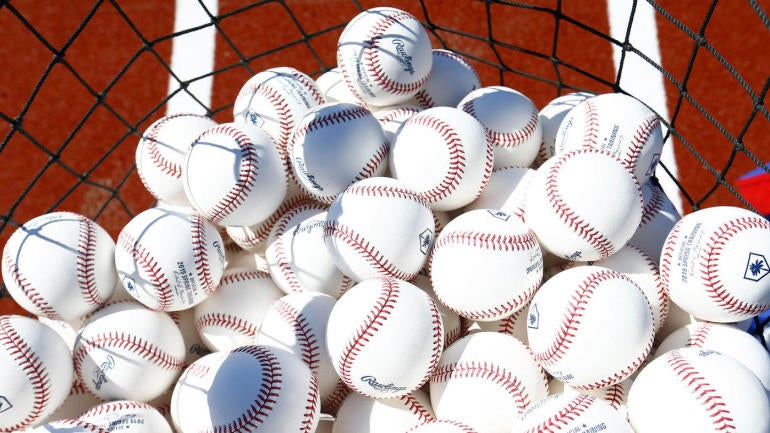
Major League Baseball is planning small changes to the baseball in an effort to reduce the wild year-to-year fluctuations in home run rate, report The Athletic's Ken Rosenthal and Eno Sarris. Last week MLB issued a memo to front offices outlining the planned changes, which are intended to deaden the ball.
Here are the gory details, from Rosenthal and Sarris:
"In an effort to center the ball with the specification range for COR and CCOR, Rawlings produced a number of baseballs from late 2019 through early 2020 that loosened the tension of the first wool winding," the memo from the office of the commissioner reads, explaining that this change had two effects — reducing the weight of the ball by less than one-tenth of an ounce, and also a slight decrease in the bounciness of the ball as measured by the COR and CCOR.
COR is the coefficient of restitution, or the relationship of the incoming speed to the outgoing speed. So, in other words, this new ball will be less bouncy.
Small changes add up. As Rosenthal and Sarris note, the Korea Baseball Organization increased the weight of its baseball less than one-twentieth of an ounce and moved the COR roughly 0.01 in 2019, and the result was a 33% decrease in home runs. That said, the KBO increased the weight of its ball, and MLB's memo indicates it will reduce the weight of its ball.
In addition to changing the baseball itself, five more teams will store baseballs in a humidor at their home park, according to the memo. The Diamondbacks, Mariners, Mets, Red Sox, and Rockies already store their baseballs in humidors, with Arizona in particular showing a decline in homers once the humidor was installed. The five teams that will add the humidor are unknown.
In 2019, MLB teams swatted a record-smashing 6,776 home runs. That happened only five years after the 30 clubs combined to hit 4,186 home runs in 2014. Here are the year-to-year home run rates over the last five seasons:
- 2020: 1.28 homers per team per game
- 2019: 1.39 (the record)
- 2018: 1.15
- 2017: 1.26 (the record prior to 2019)
- 2016: 1.16
Ideally, any changes to the baseball would bring home runs back to 2016-18 levels rather than 2014 levels, when there were only 0.86 home runs per team per game, and the league hit .251/.314/.386 overall. The risk is that fewer home runs will make offense scarce because there are so many strikeouts in today's game, and stringing together multiple hits in an inning is so difficult.
A little over a year ago MLB released a study saying its baseballs were not "juiced" in 2019 (i.e. intentionally altered to increase home runs), and that the league's rising home run rate had to do with an emphasis on launch angle, and also a slight difference in the seams on the baseball. In 2018, MLB acknowledged changes to the baseball had an effect on offense.
MLB owns Rawlings, the company that manufactures its baseballs, and every baseball is handmade. It is the single most important piece of equipment in the sport and it can play very differently from one year to the next, and this is MLB's first public effort to create some consistency.


















